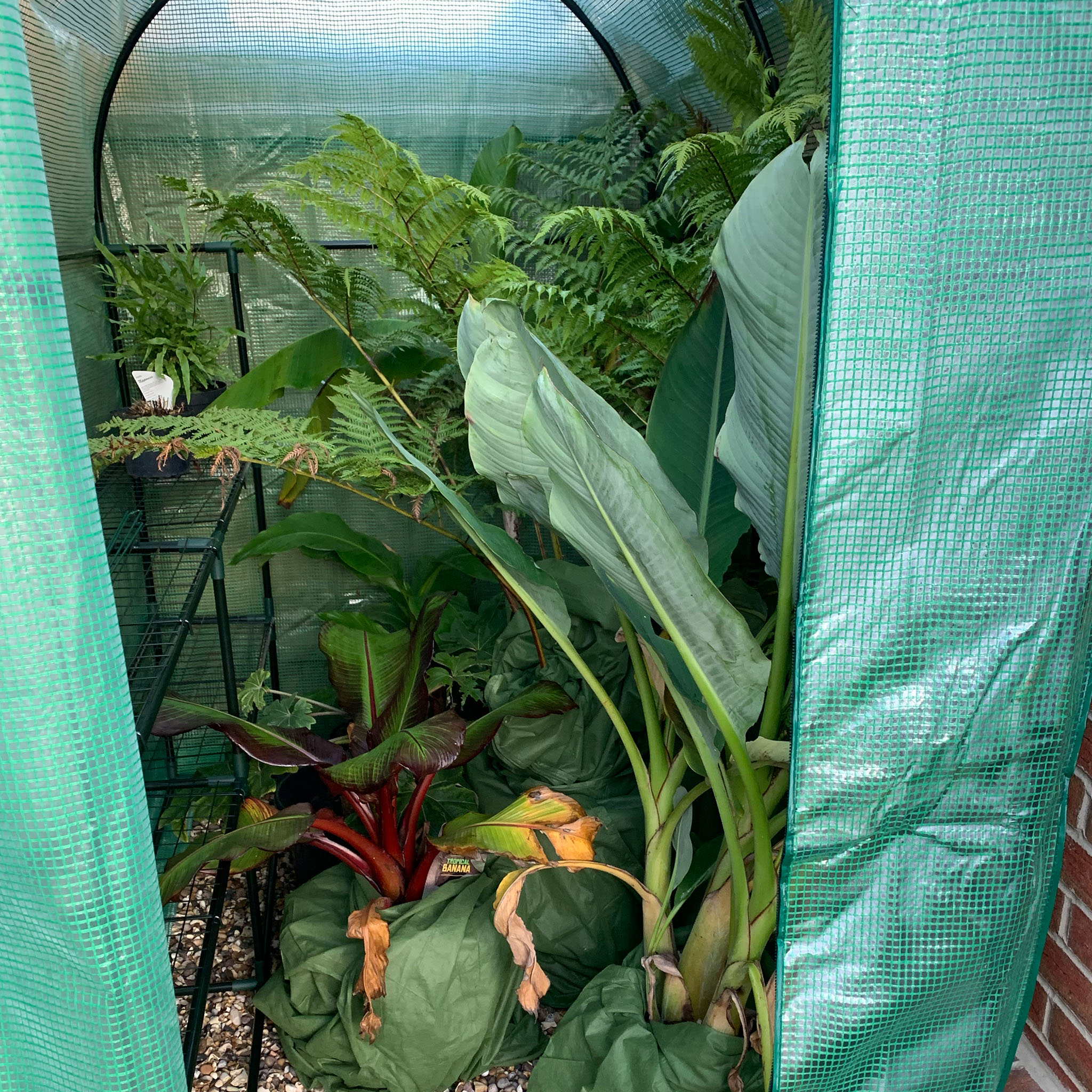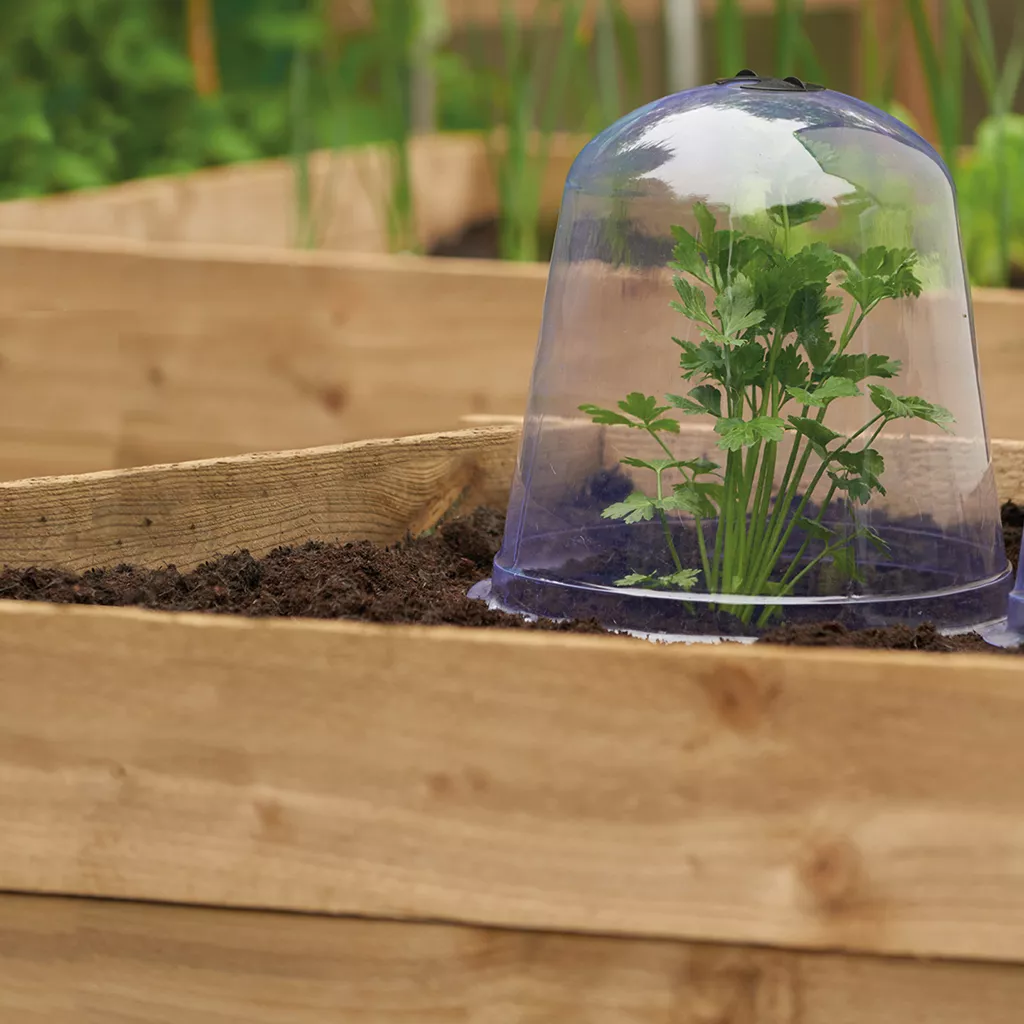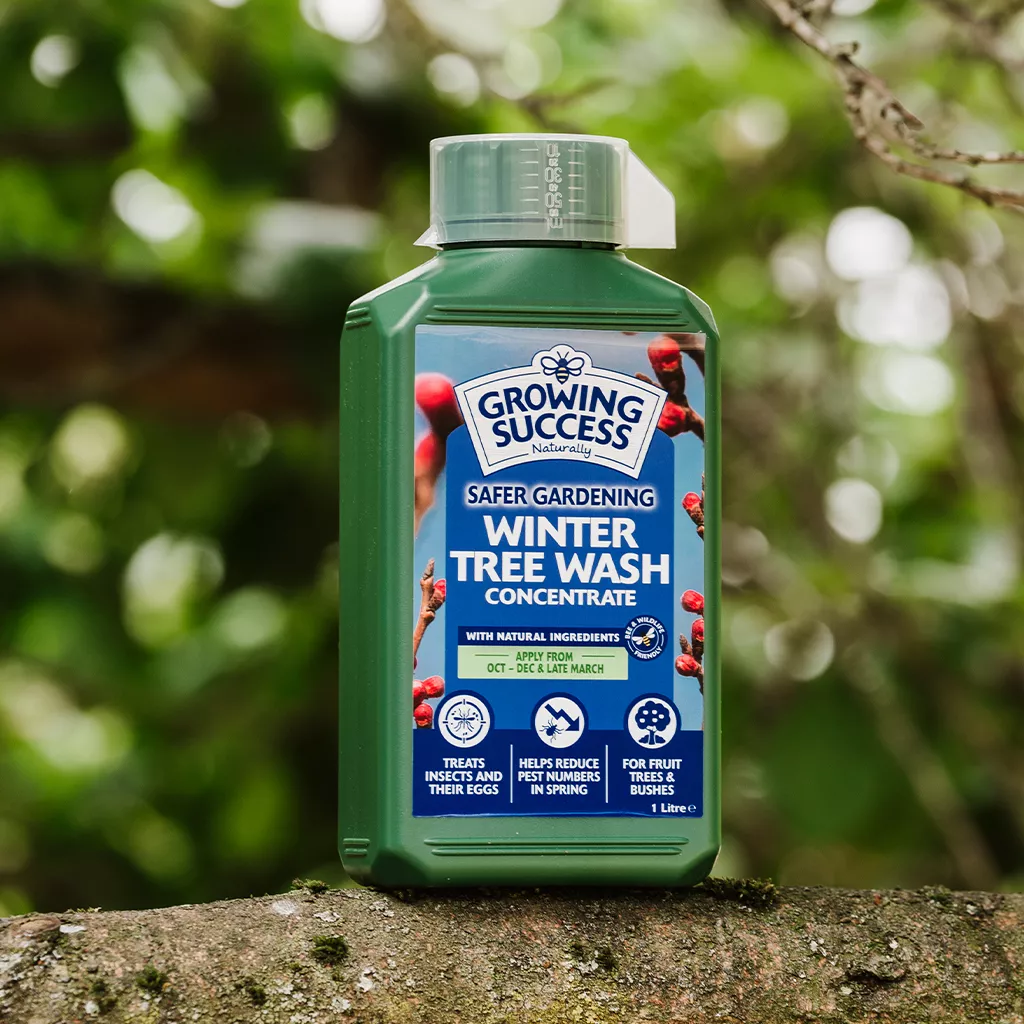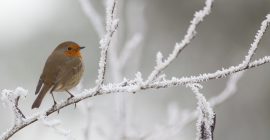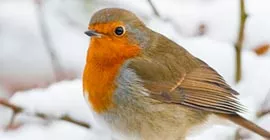Gardening in winter is all about protecting your plants and trees as best you can to survive the winter months. We have put together some helpful advice that will help keep your garden healthy and alive throughout the winter.
Protecting Plants
Winter gardening will often mean snow. If heavy snow falls this month, it is worth regularly shaking it off plants such as columner conifers and evergreens. These plants could damage easily by the snows weight. Snow can be surprisingly heavy as it accumulates on foliage and branches. Even if it does not cause branches to break, it can spoil the tight form and shape of some plants. Keep an eye on conditions, especially if you carried out autumn planting. It is easy to forget that we can have dry spells in winter and that during periods of high winds evergreen plants in particular will need regular watering as they establish.
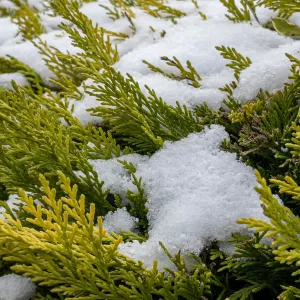
Plants in Pots & Containers
Check any plants in containers regularly as they dry out the quickest. During occasional periods of severe cold, it is worth protecting some more tender plants if you have not already wrapped them up. Lag tree ferns with hessian and straw. Mulch any tender perennials thickly with compost. Wrap bananas and other exotics taking their chances outdoors with bubble wrap or fleece.
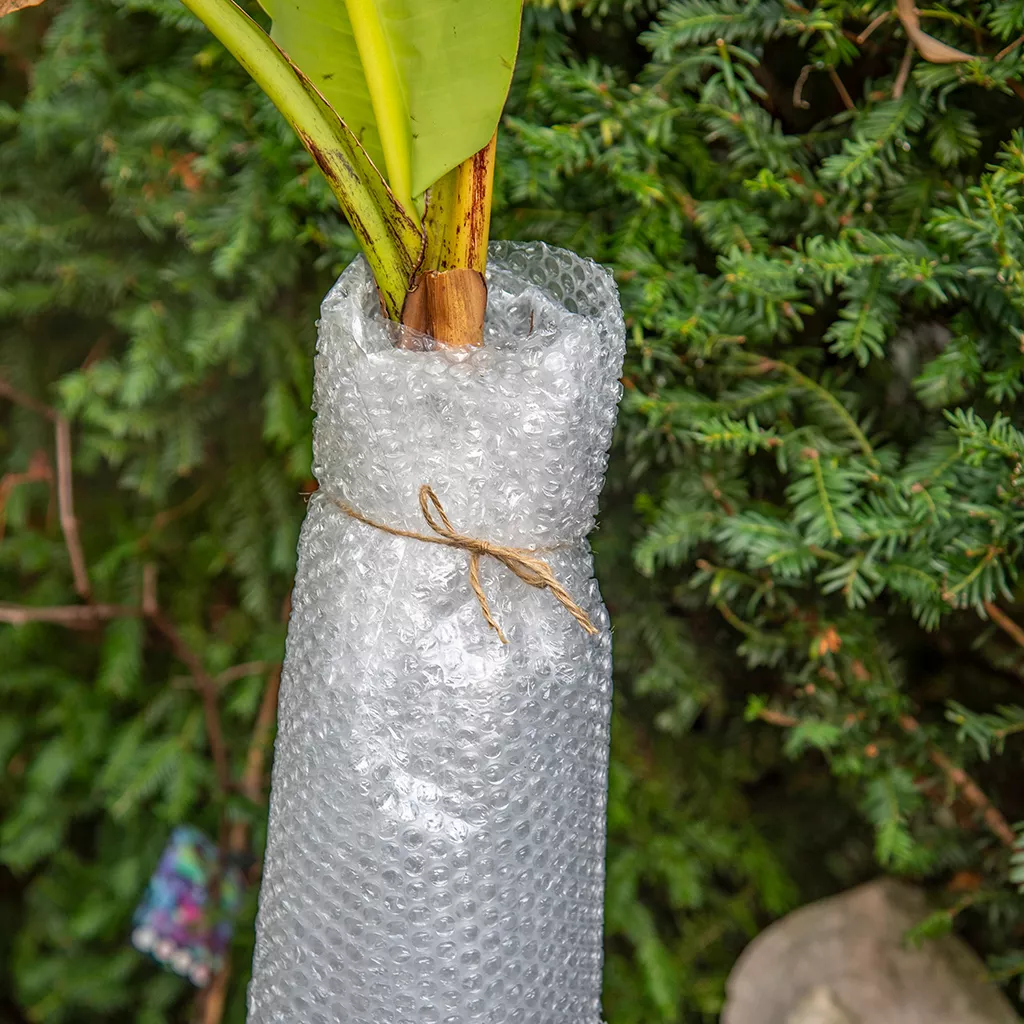
It is best to move potted plants under cover in a greenhouse or at least close to shelter by house walls during spells of extreme cold. This is because the compost and roots within may freeze. Even relatively hardy plants that survive winter when easily planted out in the ground can be damaged if grown in containers. You can lag pots with hessian or bubble wrap. If it’s just overnight when extreme temperatures are forecast, bring the plant in. You can even cover plants with plant jackets which will give plants protection against both ground and air frosts. They will still allow air, water, and moisture to reach the plants.
Plants in the Ground
It is best to give herbaceous plants left in the ground with tender, fleshy roots such as cannas, dahlias and gingers, a thick mulch of garden compost. You can then top off with a straw or leaf mould layer to help protect them. Long periods of strong icy winds can be harmful, especially to newly planted evergreens and those on the tender side.
Protect young plants such as bay, rhododendrons, myrtle, evergreen magnolia, and pittosporum by knocking four canes or posts into the ground and wrapping hessian or windbreak fabric around. You can leave the top open. Some alpines and succulents such as saxifrages and tougher agaves, while fairly hardy, do not enjoy winter wet. Make sure you mulch them well with grit to keep moisture away from foliage and if possible try to provide shelter from above in wet weather using a sheet of Perspex or a small, well-ventilated cloche.
Tree Care
Winter is the ideal time to prune your apple and pear trees now that plants are dormant and the tree’s naked branch structure can most easily be seen. Look out for congested, rubbing growth, dead or diseased wood, and overlong branch leaders. Pruning apples and pears keeps your trees cropping well, stimulates new growth, and also maintains the tree’s health. It also helps provide good quality fruit at harvest and can mean that fruit is in easier reach for picking. Use sharp secateurs for growth that is within reach; for taller trees you will need a long reach pruner and thicker branches will require a pruning saw to cut.
Winter pruning of apples and pears involves three main techniques.
- Spur pruning and thinning, to stimulate the growth of fruiting spurs and prevent overcrowded fruiting.
- Regulated pruning to remove crossing or rubbing branches.
- Renewal pruning, to stimulate new young wood.
You will need sharp secateurs, a pruning saw, and for taller trees telescopic loppers. Remember that pruning an apple or pear tree will stimulate it to produce more growth. If your tree is vigorous, cutting back too hard will simply result in excessive young growth in spring. More vigorous trees need less pruning.
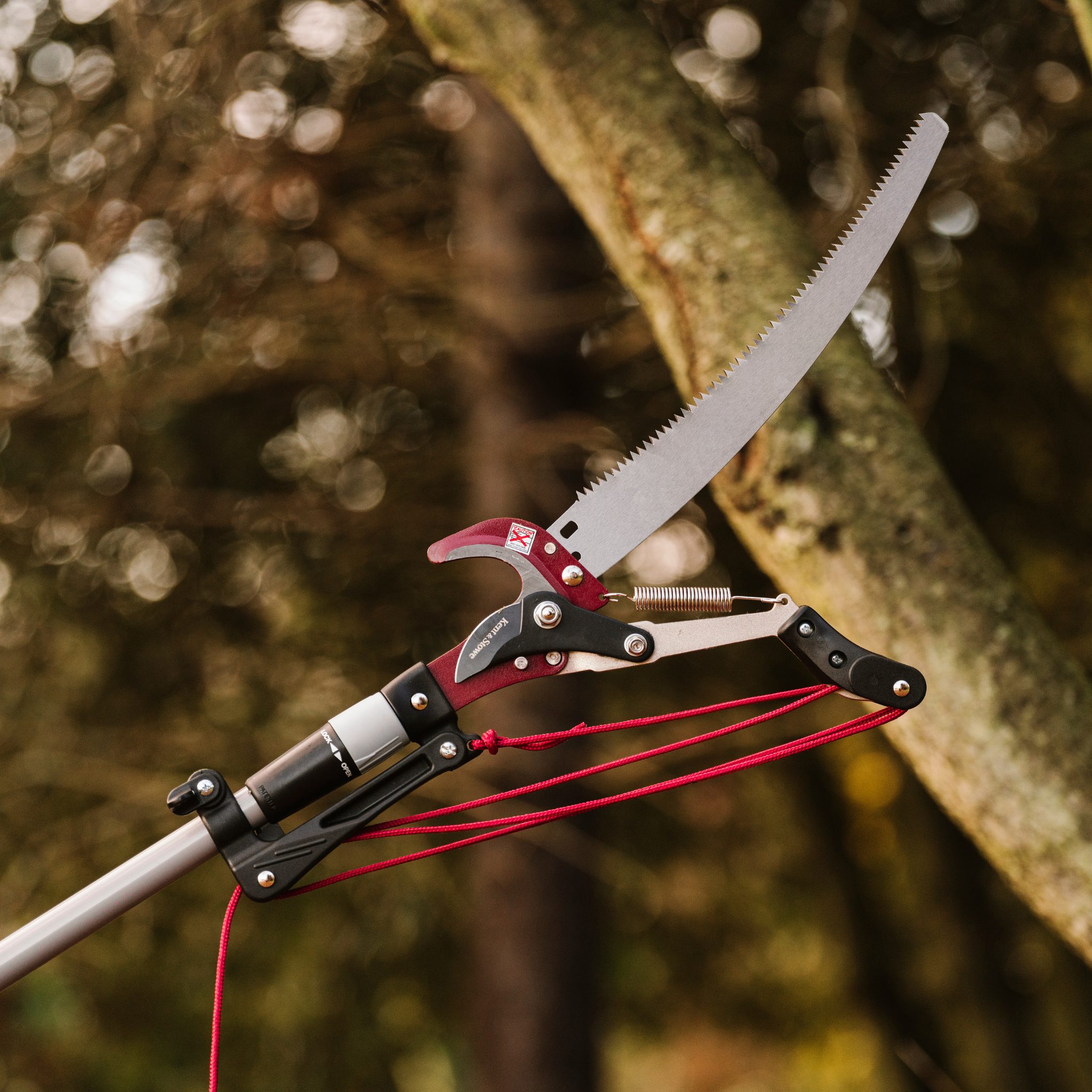
The amount and sort of pruning you carry out will change from year to year. Check young trees that have been planted in the last couple of years before the worst winter weather. Make sure tree ties and stakes are fit for purpose and will support the tree through winter gales.
Check unstaked shrubs and trees planted in the last year or so for wind rock, where the roots are broken and the stem moves loosely in the soil. Plants such as buddleja that grow quickly may need pruning by half with sharp secateurs or even a pruning saw to reduce wind resistance. Others, especially evergreens such as large-leaved Trachycarpus palms, may need staking now.
Protecting Trees from Insects
It’s important to not only prepare trees for the cold but also protect them from insects that may cause damage during the colder months. One effective way to do this is by using a Winter Tree Wash. This treatment helps protect trees from overwintering pests such as moths, aphids, and other insects that may seek shelter on tree trunks and branches. These pests can lay eggs or hibernate during the winter, only to emerge in spring as grubs or caterpillars that will feed on young leaves, blossoms, and fruit. By applying a tree wash now, you can help minimise the number of insects that survive the winter. This will also reduce the risk of damage when new growth begins in the spring. This proactive step ensures that your trees enter the growing season healthier and less vulnerable to insect infestations. This will therefore promote stronger growth and better fruit production.


